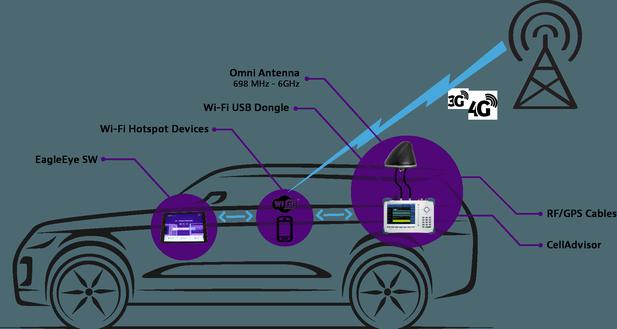Solid-state laser
Introduction
In 1960, the ruby laser invented by T.H. Maiman is a solid-state laser and the first laser in the world. The solid-state laser is generally composed of laser working material, excitation source, condensing cavity, resonator mirror and power supply.
The solid working material used in this type of laser is made by doping a crystal with metal ions that can produce stimulated emission. There are three main types of metal ions that can produce stimulated emission in solids: (1) Transition metal ions (such as Cr3+); (2) Most lanthanide metal ions (such as Nd3+, Sm2+, Dy2+, etc.); (3) Actinide metal ions (such as U3+) ). The main characteristics of these metal ions doped into the solid matrix are: relatively wide effective absorption band, relatively high fluorescence efficiency, relatively long fluorescence lifetime and relatively narrow fluorescence spectrum, so it is easy to produce population inversion And stimulated emission. The artificial crystals used as crystal matrix mainly include: corundum (NaAlSi2O6), yttrium aluminum garnet (Y3Al5, O12), calcium tungstate (CaWO4), calcium fluoride (CaF2), etc., as well as yttrium aluminate (YA lO3), Lanthanum Beryllium (La2Be2O5) and so on. The main glass substrates are high-quality silicate optical glass, such as the commonly used barium crown glass and lime crown glass. Compared with the crystal matrix, the main feature of the glass matrix is that it is convenient to prepare and easy to obtain large-size and high-quality materials. The main requirements for crystals and glass substrates are: easy to incorporate luminescent metal ions for activation; good spectral characteristics, optical transmittance characteristics and high optical (refractive index) uniformity; physical properties suitable for long-term laser operation And chemical properties (such as thermal properties, anti-deterioration properties, chemical stability, etc.). Crystal lasers are typically represented by ruby (Al2O3: Cr3+) and neodymium-doped yttrium aluminum garnet (abbreviated as YAG: Nd3+). Glass lasers are represented by neodymium glass lasers.
Working material
The working material of the solid-state laser is composed of optically transparent crystal or glass as the matrix material and doped with activating ions or other activating materials. This kind of working substance should generally have good physical-chemical properties, narrow fluorescence spectrum, strong and wide absorption band and high fluorescence quantum efficiency.
Glass laser working material is easy to be made into uniform large-size material, which can be used for high-energy or high-peak power lasers. However, its fluorescence spectrum is wide and thermal performance is poor, so it is not suitable for working under high average power. Common neodymium glasses are silicate, phosphate and fluorophosphate glasses. In the early 1980s, neodymium glass with a negative refractive index temperature coefficient was successfully developed, which can be used for medium and small energy lasers with high repetition rates.
Crystal laser working materials generally have good thermal and mechanical properties, and a narrow fluorescence spectrum, but the crystal growth technology for obtaining high-quality large-size materials is complicated. Since the 1960s, more than 300 kinds of rare earth metal or transition metal ion oxide and fluoride crystals have been doped to realize laser oscillation. Commonly used laser crystals are ruby (Cr:Al2O3, wavelength 6943 angstroms), neodymium-doped yttrium aluminum garnet (Nd:Y3Al5O12, Nd:YAG, wavelength 1.064 microns), and yttrium lithium fluoride (LiYF4, YLF for short; Nd:YLF) , Wavelength 1.047 or 1.053 microns; Ho:Er:Tm:YLF, wavelength 2.06 microns) and so on.
Since 1973, there has been another class of self-activated laser crystals. Its activating ion is a chemical component of the crystal, so the concentration of activating ion is high and it will not cause fluorescence quenching. The laser gain of this kind of crystal is high, and the extraction threshold is low. The main varieties are neodymium pentaphosphate (NdP5O14), lithium neodymium tetraphosphate (NdLiP4O12) and neodymium aluminum borate [NdAl3 (BO4) 3]. They are mostly grown by the molten salt method, and the crystal size is small, which can be used for small solid-state lasers.
A variety of tunable laser crystals with broadband fluorescence characteristics have been developed, such as golden emerald with terminal phonon transition (Cr:BeAl2O4, wavelength 0.701~0.815 microns, room temperature operation), doped Nickel magnesium fluoride (Ni:MgF2, wavelength 1.6~1.8 microns, low temperature operation), 5d→4f transition cerium-doped yttrium lithium fluoride (Ce:YLF , Wavelength 0.306 ~ 0.315 microns, excited by excimer laser, working at room temperature) and alkali halide color center laser crystals (undoped or doped potassium chloride, lithium fluoride, etc., wavelength 0.8 ~ 3.9 microns, mostly in Work at low temperatures).

Excitation source
Solid-state lasers use light as the excitation source. Commonly used pulse excitation sources include xenon-filled flash lamps; continuous excitation sources include krypton arc lamps, iodine tungsten lamps, potassium rubidium lamps, etc. In small long-life lasers, semiconductor light-emitting diodes or sunlight can be used as excitation sources. Some new solid-state lasers also use laser excitation.
Because only part of the emission spectrum of the solid-state laser is absorbed by the working material, plus other losses, the energy conversion efficiency is not high, generally between a few thousandths to a few percent.
Characteristics
Solid-state lasers can be used as high-energy and high-power coherent light sources. The output energy of the ruby pulse laser can reach the kilojoule level. The maximum pulse power of the neodymium glass laser system with adjusted Q and multi-stage amplification is up to 10 watts. The output power of yttrium aluminum garnet continuous laser is up to one hundred watts, and multi-stage cascade connection can reach kilowatts.
Solid-state lasers use Q switching technology (electro-optic modulation) to obtain short pulses ranging from nanoseconds to hundreds of nanoseconds, and use mode-locking technology to obtain picoseconds to hundreds of picoseconds. Ultra-short pulses of the order of magnitude.
Due to the optical inhomogeneity of the working material and other reasons, the output of solid-state lasers is generally multi-mode. If the working material with good optical uniformity is selected and technical measures such as careful design of the resonant cavity are adopted, a fundamental transverse mode (TEM00) laser with a beam divergence angle close to the diffraction limit can be obtained, and a single longitudinal mode laser can also be obtained.
Application Trends
Solid-state lasers are widely used in military, processing, medical and scientific research fields. It is commonly used in ranging, tracking, guidance, punching, cutting and welding, semiconductor material annealing, electronic device micromachining, atmospheric detection, spectroscopy research, surgery and ophthalmic surgery, plasma diagnosis, pulse holography, laser nuclear fusion, etc. . Solid-state lasers are also used as excitation sources for tunable dye lasers.
The development trend of solid-state lasers is the diversification of materials and devices, including seeking new wavelengths and new working materials with tunable working wavelengths, improving laser conversion efficiency, increasing output power, improving beam quality, and compressing Pulse width, improve reliability and extend working life, etc.
Classification
1. Tunable near-infrared solid-state laser In 1988, Petricev et al. discovered that tetravalent chromium (Cr can be mixed into 4-valent Mg2SiO4 tetragonal lattice (Cr: Mg2SiO4 is called forsterite. Forsterite is usually pumped by a Nd: YA G laser, and can be tuned between 1,1301,367 nm, and output a few watts of power in a mode-locked manner. Cr: YA G is also inactive A good medium for Q-switched neodymium lasers.
Cr:LiSA F was successfully developed by Livemor Lab in 1988. It is mainly used for the generation and amplification of ultra-short pulses. It has the advantages of being tunable from 780nm to 990nm, and has more advantages. Good thermodynamic properties. It provides an important means for the rapid research of material processing, tissue ablation, chemical and biological processes. Cr:LiSA F can also be used for remote sensing water vapor detection through intracavity frequency doubled blue light output and Q-switch.< /p>
2. Due to its unique properties, the basic physical properties of the tunable ultraviolet Ce3+ laser Ce: LiSA F are similar to dye lasers. It can be side-pumped and end-pumped, and the wavelength is between 280320nm. Tunable average power>100mW
3. Tunable mid-infrared Cr2+ laser at room temperature, the emission of tunable mid-infrared solid-state laser, due to the long working wavelength and wide frequency band, resulting in non-radiative delay Adding (converting pump light to heat instead of laser radiation) Cr2+: ZnSe laser first obtains tunable mid-infrared laser emission at room temperature, and is not affected by the unfavorable effects of non-radiative delay. The absorption and emission spectra of this material It shows that a 1800nm diode pump can provide a tunable emission wavelength between 2,2003,000nm.
4. Ytterbium (Yb laser due to Yb: YAG crystal has a very low thermal load (about Nd: 1/3 of YAG crystals can be pumped with 943nm InGaA diode end face to get more than 150W power. In addition, Ytterbium-doped strontium fluorophosphate Sr5PO43FYb: S-FA P pumped with 900nm laser diode can produce 1,047nm laser, output power 50WQ switching energy 47mJ27n pulse.
5. Ti: Sapphire Doped Laser Ti: Sapphire Doped Laser is a laser with TiA l2O3 crystal as the laser medium (Ti:S laser for short) with wide tuning range (6701200nm output power, high conversion efficiency) , Various operating modes and other characteristics.
Latest: Photoelectric encoder
Next: Krypton lamp







